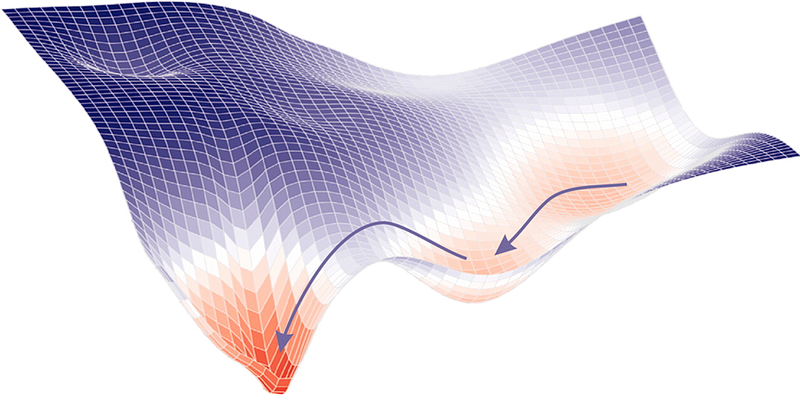Difference between revisions of "Gradient Descent Optimization & Challenges"
(→Vanishing & Exploding Gradients Challenges with Long Short-Term Memory (LSTM) and Recurrent Neural Networks (RNN)) |
|||
| Line 17: | Line 17: | ||
http://cdn-images-1.medium.com/max/800/1*NRCWfdXa7b-ak2nBtmwRvw.png | http://cdn-images-1.medium.com/max/800/1*NRCWfdXa7b-ak2nBtmwRvw.png | ||
| − | Nonlinear | + | Nonlinear [[Regression]] algorithms, which fit curves that are not linear in their parameters to data, are a little more complicated, because, unlike linear [[Regression]] problems, they can’t be solved with a deterministic method. Instead, the nonlinear [[Regression]] algorithms implement some kind of iterative minimization process, often some variation on the method of steepest descent. Steepest descent basically computes the squared error and its gradient at the current parameter values, picks a step size (aka learning rate), follows the direction of the gradient “down the hill,” and then recomputes the squared error and its gradient at the new parameter values. Eventually, with luck, the process converges. The variants on steepest descent try to improve the convergence properties. Machine learning algorithms are even less straightforward than nonlinear [[Regression]], partly because machine learning dispenses with the constraint of fitting to a specific mathematical function, such as a polynomial. There are two major categories of problems that are often solved by machine learning: [[Regression]] and classification. [[Regression]] is for numeric data (e.g. What is the likely income for someone with a given address and profession?) and classification is for non-numeric data (e.g. Will the applicant default on this loan?). [http://www.infoworld.com/article/3394399/machine-learning-algorithms-explained.html Machine learning algorithms explained | Martin Heller - InfoWorld] |
Revision as of 02:41, 13 July 2019
YouTube search... ...Google search
- Gradient Boosting Algorithms
- Backpropagation
- Objective vs. Cost vs. Loss vs. Error Function
- Topology and Weight Evolving Artificial Neural Network (TWEANN)
- Other Challenges in Artificial Intelligence

Nonlinear Regression algorithms, which fit curves that are not linear in their parameters to data, are a little more complicated, because, unlike linear Regression problems, they can’t be solved with a deterministic method. Instead, the nonlinear Regression algorithms implement some kind of iterative minimization process, often some variation on the method of steepest descent. Steepest descent basically computes the squared error and its gradient at the current parameter values, picks a step size (aka learning rate), follows the direction of the gradient “down the hill,” and then recomputes the squared error and its gradient at the new parameter values. Eventually, with luck, the process converges. The variants on steepest descent try to improve the convergence properties. Machine learning algorithms are even less straightforward than nonlinear Regression, partly because machine learning dispenses with the constraint of fitting to a specific mathematical function, such as a polynomial. There are two major categories of problems that are often solved by machine learning: Regression and classification. Regression is for numeric data (e.g. What is the likely income for someone with a given address and profession?) and classification is for non-numeric data (e.g. Will the applicant default on this loan?). Machine learning algorithms explained | Martin Heller - InfoWorld
Gradient Descent - Stochastic (SGD), Batch (BGD) & Mini-Batch
Vanishing & Exploding Gradients Problems
Vanishing & Exploding Gradients Challenges with Long Short-Term Memory (LSTM) and Recurrent Neural Networks (RNN)